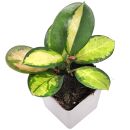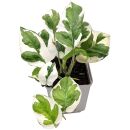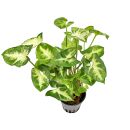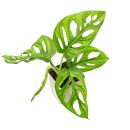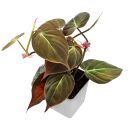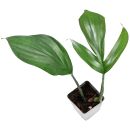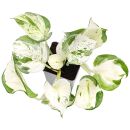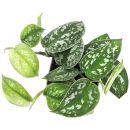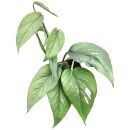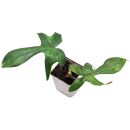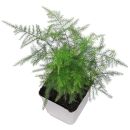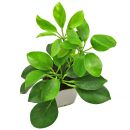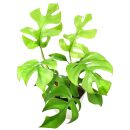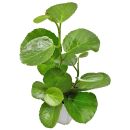In stock
- Robust climbing plant
- Colourful, eye-catching leaf colouring
- Attractive, waxy flowers
- Flexible placement
In stock
- Attractive climbing plant
- Beautiful leaf pattern
- Prefers high humidity
- Bright, indirect light ideal
In stock
- Compact miniature form of the Arrowhead plant
- Forms bushes up to approx 30 cm tall
- Accent plant in tropical terrariums
In stock
- Undemanding climbing and hanging plant
- Striking yellow-green colour
- Versatile usable in tropical terrariums
Out of stock
- Small Monstera species
- Leaves with huge windows
- Climbing plant for rainforest terrariums
Out of stock
- Also known as Philodendron micans and P. scandens 'Micans'
- Velvety leaf surface
- Prefers a warm climate
- High humidity favored
Out of stock
- Also sold as "Philodendron Dragon Tail"
- Large climbing plant from East and Southeast Asia
- Relatively rare in cultivation
- Also suitable for terrariums with cooler temperatures
Out of stock
- Robust climbing plant
- Adaptable to light conditions
- Hanging or climbing growth
- Shiny, vibrant leaf surface
- Conducive to high humidity
Out of stock
- Easy to care for climbing plant
- Exotic, silver-spotted leaves
- Ideal for high humidity
- Supports terrarium microclimate
Out of stock
- Attractive climbing plant
- Blue-green, metallic shimmering leaves
- Adaptable to light conditions
- Prefers high humidity
Out of stock
- Undemanding climbing and hanging plant
- Special leaf shape
- Spreading growth
Out of stock
- Feathery foliage
- From tropical and subtropical regions
- Versatile use
- Easy to care for
Out of stock
- Attractive umbrella-shaped leaves
- Robust and undemanding
- Solitary in tropical terrariums
Out of stock
- Climbing plant from tropical Asia
- Monstera-like, rather small leaves
- Versatile plant for tropical terrariums
Out of stock
- Climbing plant from East Africa
- Round, thick, glossy leaves
- Ideal for tropical dry forest terrariums
Terrarium plants - Climbers - Green up your terrarium!
Sprawling lianas hanging down from trees shape the idea of a tropical jungle. Climbing plants are found in all parts of the world where trees and shrubs also thrive, but they are most common and diverse in the humid tropics. They use the load-bearing capacity of woody plants to reach the light with little effort. Small, graceful climbers on tree trunks as well as huge twining plants overgrowing the trees are among them, herbaceous plants as well as climbing shrubs. It is not uncommon for climbing plant species to show a great difference between the juvenile form in which they grow up the trees and the flowering and fruiting mature form that they develop in the treetops.
According to their climbing technique, a distinction is made between:
- Self-clinging climbers: These plants can attach themselves to flat surfaces, mostly by adhesive roots, but also by tendrils with adhesive discs. A typical adhesive root climber is ivy, which can cover tree trunks as well as rocks and masonry. Climbing fig species such as Ficus pumila grow in a very similar way. Many aroid plants such as Philodendron and Monstera species and even some ferns climb with the help of adhesive roots. Self-clinging climbers be used to green any surface in the terrarium, and often climbers of this type can also be used as ground cover.
- Tendril climbers: They form specialised organs, tendrils, which wrap around thin structures such as twigs and stalks. There are also leaf-stalked climbers. They can hardly hold on to flat surfaces unless they have adhesive organs on the tendrils and are thus self-climbers. They therefore need a climbing aid. Typical tendril climbers are vine plants (Vitaceae) such as Cissus species, passion flowers (Passiflora) and many pumpkin plants (Cucurbitaceae).
- Twining plants, also called twiners: They wrap their stem around a support. Like tendril climbers, they cannot attach themselves to flat surfaces and need a climbing aid. Countless climbing plants grow twiningly, among the tropical plants e.g. the waxflower (Hoya) or from the native flora winches, hops and perfoliate woodbine.
- Rambling plants: They climb rather passively by hooking themselves into the thicket with spines, thorns and the like, such as roses and blackberries, in the tropics e.g. the rattan palms (Calamus).

